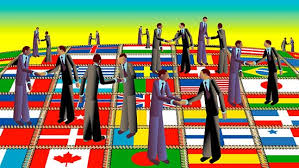19, June, 2019
What do you want from politicians? Will you get it, or is it even realistic to demand it?
9, May, 2019
What is important to us from the government? Is it what will put money in our pockets, or is it what is good for the whole of society?
29, December, 2018
People do change opinions so we need to find the trigger that will explain a situation in their terms that leads to a different conclusion.
5, May, 2018
There is usually a tension between business and government. Is this a good thing?
9, January, 2018
There is a doomsday clock that tells us how close we are to the planet's self-destruction. Should there be a democracy clock to tell us how close we are to the end of democracy?
24, October, 2017
Take a thought experiment and think about what the world would be like if there were no countries and no borders.
20, August, 2017
As soon as an idea is put forward excited politicians cannot wait to announce it. Stop. It may take years to estimate the cost and time required. It may even turn out not to be viable. Best to do the feasibility study first.
28, June, 2017
Creative thinking and politics conjure up images of rorting and dodgy accounting. However, innovative thinking should be applied to some of the problems governments face to find alternative solutions.
4, May, 2017
Too much regulation is the call from business. Without that regulation, would we live in a better world? Perhaps it would a place where a business that was not prepared to bend the rules would fail.











